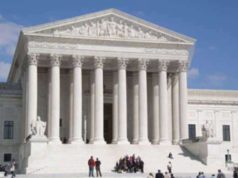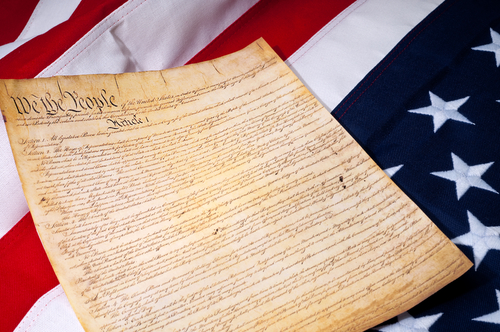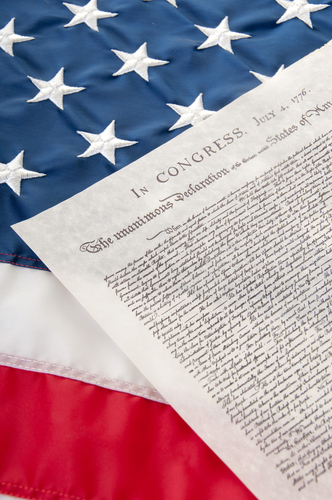
Constitutional Amendments at a Glance
The United States Constitution is a living, breathing document that has undergone various amendments throughout its lifetime. The founding fathers believed that the constitution should adapt with the growth and evolution of the country. The process of amending the constitution is a meticulous process that involves careful consideration and thought. This article will take a deep dive into some of the most significant constitutional amendments and how they have shaped America into the country it is today.
The Bill of Rights: Amendments 1-10
The Bill of Rights is a collection of ten amendments that were ratified in 1791. These amendments were added to the constitution to protect fundamental human rights, such as freedom of speech, religion, and the press. The first amendment grants the freedom of religion, speech, and assembly. The second amendment gives citizens the right to bear arms. The third amendment prohibits the quartering of troops in private homes. The fourth amendment guarantees the right to privacy. The fifth amendment guarantees the right to due process, as well as protection against self-incrimination. The sixth amendment grants the right to a speedy trial. The seventh amendment gives the right to a trial by jury. The eighth amendment prohibits cruel and unusual punishment. The ninth amendment declares that the people’s rights are not just limited to those stated in the constitution, and the tenth amendment grants states the powers not delegated to the federal government.
The Bill of Rights has played a significant role in shaping America’s democracy, ensuring that the government doesn’t infringe upon the fundamental rights of its citizens. These amendments have been upheld by various court cases, and they continue to be an essential part of the constitution today.
The 13th Amendment: Abolishing Slavery
The 13th amendment to the constitution was ratified in 1865, following the conclusion of the Civil War. The amendment abolished slavery and involuntary servitude in the United States. This amendment was a significant milestone in American history, as it brought an end to the cruel practice of slavery that had existed in the country for centuries.
Before the 13th amendment was passed, slavery was legal in many parts of the United States. Slaves were considered property rather than people, and their owners could buy, sell, and trade them at will. The 13th amendment put an end to this practice, providing millions of enslaved Africans with their freedom.
The 14th Amendment: Equal Protection Under Law
The 14th amendment to the constitution was ratified in 1868, in the aftermath of the Civil War. This amendment guarantees equal protection under the law and due process for all citizens. It was designed to provide protections for African Americans, who had been systematically denied their rights throughout much of the country’s history.
The 14th amendment has been used to protect the rights of various minority groups throughout history. It has been used to promote gender equality, LGBTQ+ rights, and other civil rights causes. It was also used to establish the citizenship of all individuals born or naturalized in the United States, overturning the Dred Scott decision.
The 15th Amendment: Voting Rights
The 15th amendment to the constitution was ratified in 1870. This amendment prohibits the federal government and states from denying citizens the right to vote based on race, color, or previous condition of servitude. This amendment was a significant milestone in the fight for voting rights, as it sought to enfranchise Black men who had been previously excluded from the political process.
However, the 15th amendment did not guarantee the right to vote for all citizens. Women, Native Americans, and immigrants were still systematically denied the right to vote, despite the protections provided in the amendment. It wasn’t until the passage of the Voting Rights Act of 1965 that these groups were fully enfranchised.
The 19th Amendment: Women’s Suffrage
The 19th amendment to the constitution was ratified in 1920, following a long and bitter battle for women’s suffrage. This amendment guarantees the right to vote for all citizens, regardless of gender. It was a significant milestone in American history, as it recognized that women deserved to have a say in the country’s political process.
The women’s suffrage movement was a long and grueling battle, with women like Susan B. Anthony, Elizabeth Cady Stanton, and Carrie Chapman Catt working tirelessly to secure the right to vote for all women. The passage of the 19th amendment was a monumental victory for the women’s suffrage movement, and it paved the way for future advancements in women’s rights.
The 26th Amendment: Lowering the Voting Age
The 26th amendment to the constitution was ratified in 1971, following nationwide protests against the Vietnam War. This amendment lowered the voting age from 21 to 18, allowing millions of young Americans to have a say in the country’s political process.
Before the passage of the 26th amendment, many young Americans were drafted to fight in the Vietnam War, but they were not given the right to vote. This was seen as a gross injustice by many young people, and they organized to demand change. The passage of the 26th amendment was a major victory for the youth-led anti-war movement, and it remains a testament to the power of grassroots organizing.
Conclusion
The United States Constitution is a living, breathing document that has undergone various amendments throughout its history. These amendments have played a significant role in shaping America into the country it is today. The Bill of Rights has ensured that citizens’ fundamental rights are protected, while amendments like the 13th, 14th, and 15th have played a crucial role in advancing civil rights. The 19th amendment granted women the right to vote, while the 26th amendment lowered the voting age. These amendments have brought about significant progress, but there is still much work to be done to ensure that all citizens’ rights are protected. As America moves forward, it is crucial that these amendments are upheld and strengthened, ensuring that the country continues to evolve and adapt to meet the needs of its citizens.
A Constitutional amendment is a change that is made to the Constitution. In the United States, Amendments can be made to the U.S. Constitution. When it comes to amending the U.S. Constitution, there is a special procedure that has to be done in order to havethe Amendment formally made.The reason in which the Founding Fathers put rigid stipulations regarding Amendments into the Constitution is to ensure that the Amendments proposed can be seriously considered and voted on before implementation.
However, they were aware that as the nation changed and times changed, theConstitution would also have to be able to adapt. In order to implement Amendments to the U.S. Constitution, these Amendments have to be proposed and then ratified. To dothis, Amendments have to be proposed in Congress and then voted on. This requires a vote of a two-thirds majority from within the Senate and the Houseof Representatives.
However, another time in which Amendments can be proposed is during a Constitutional Convention. In order for a Constitutional Convention to occur, two-thirds of Congress must vote affirmatively in calling for the Convention. In a Constitutional Convention,Amendments can be proposed. The purpose of this Convention is to either rewrite or change elements of the Constitution to fit the needs of the nation and the time.
Once an Amendment has been proposed and voted on by both Houses of Congress, it then needs to be ratified. To have an Amendment ratified a three-fourths vote of all states in the United States is required. This is can either be done through State Legislature or with the help of special State conventions. If it is ratified by three-fourths of the states,the proposed Amendment can then be instituted.


























